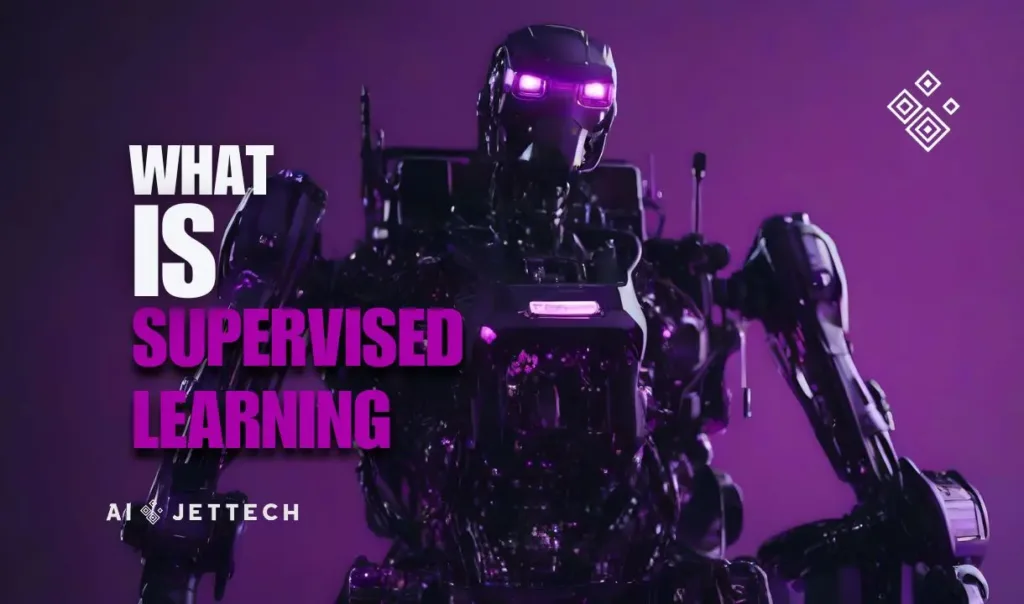What is Supervised Learning ?
Supervised learning is a cornerstone of machine learning, where the goal is to learn a function that maps an input to an output based on example input-output pairs. It figures out a rule from labeled training information. This data includes a bunch of examples where each one has an input and the correct output. In the realm of supervised learning, two primary tasks stand out: regression and classification. These tasks are tackled with various algorithms, each with its strengths and applications.
Regression and Classification in machine learning
At its core, regression involves predicting a continuous quantity. Imagine you’re trying to predict the price of a house based on its features like size, location, and number of bedrooms. This is a classic regression problem where you’re dealing with a continuous outcome.
On the flip side, classification deals with predicting a category or class. Consider an email filtering system that classifies emails as either ‘spam’ or ‘not spam.’ Here, you’re not predicting a continuous number but rather choosing from two categories, making it a classification task.
Exploring Key Algorithms in Supervised Learning
Linear Regression
Linear regression is the go-to method for regression tasks. It supposes there’s a straight-line connection between the input factors (X) and the one output factor (Y). To be precise, Y can be figured out by adding up the input factors (X) with some weights. Despite being simple, linear regression is incredibly powerful and forms the basis for understanding more complex algorithms.
Logistic Regression
Despite its name, logistic regression is utilized for sorting problems, not regression. It predicts probabilities through a logistic function, which is especially handy for tasks involving binary classification. For instance, it can predict whether a tumor is benign or malignant by assessing various cellular attributes.
Decision Trees
Decision trees are versatile algorithms that can be used for both regression and classification tasks. They model decisions and their possible consequences as a tree structure. Each node in the tree represents a feature of the input, each branch represents a decision rule, and each leaf represents an outcome. Decision trees are particularly appealing for their ease of interpretation and visualization.
Support Vector Machines (SVM)
Support vector machines (SVMs) are a group of supervised learning techniques employed for tasks like classification, regression, and identifying outliers. The basic SVM takes a set of input data and predicts, for each given input, which of two possible classes the input is a part of, making it a non-probabilistic binary linear classifier. SVMs excel at nonlinear classification by employing a method known as the kernel trick, which covertly transforms their inputs into high-dimensional feature spaces.
Weaving It All Together
Each of these algorithms plays a critical role in solving supervised learning problems. Linear regression lays the foundation with its simplicity and direct approach. Logistic regression steps in when the outcome is categorical, providing a probability score for observations. Decision trees cut through more complex decision-making processes, offering a visual and interpretable model. Lastly, SVMs bring robustness and versatility, especially in high-dimensional spaces.
What is Supervised Learning in short ?
Supervised learning is vital for mapping inputs to outputs using labeled data, with regression predicting continuous outcomes and classification predicting categories.
Supervised Learning Example
For instance, if you're trying to predict whether a student will pass or fail an exam based on their study hours and previous exam scores, you would use a classification algorithm like logistic regression. This is because the outcome you're predicting is categorical (pass or fail), rather than a continuous number.
As we navigate through the landscape of supervised learning, it’s essential to understand not just the algorithms but also their appropriate application contexts. The choice of algorithm can significantly affect the performance of a machine learning model, and understanding these nuances is key to unlocking the potential of machine learning.
Try it yourself : Explore an open-source machine learning library such as scikit-learn, and try implementing one of the supervised learning algorithms mentioned, like linear regression or logistic regression, on a simple dataset.
“If you have any questions or suggestions about this course, don’t hesitate to get in touch with us or drop a comment below. We’d love to hear from you! 🚀💡”






